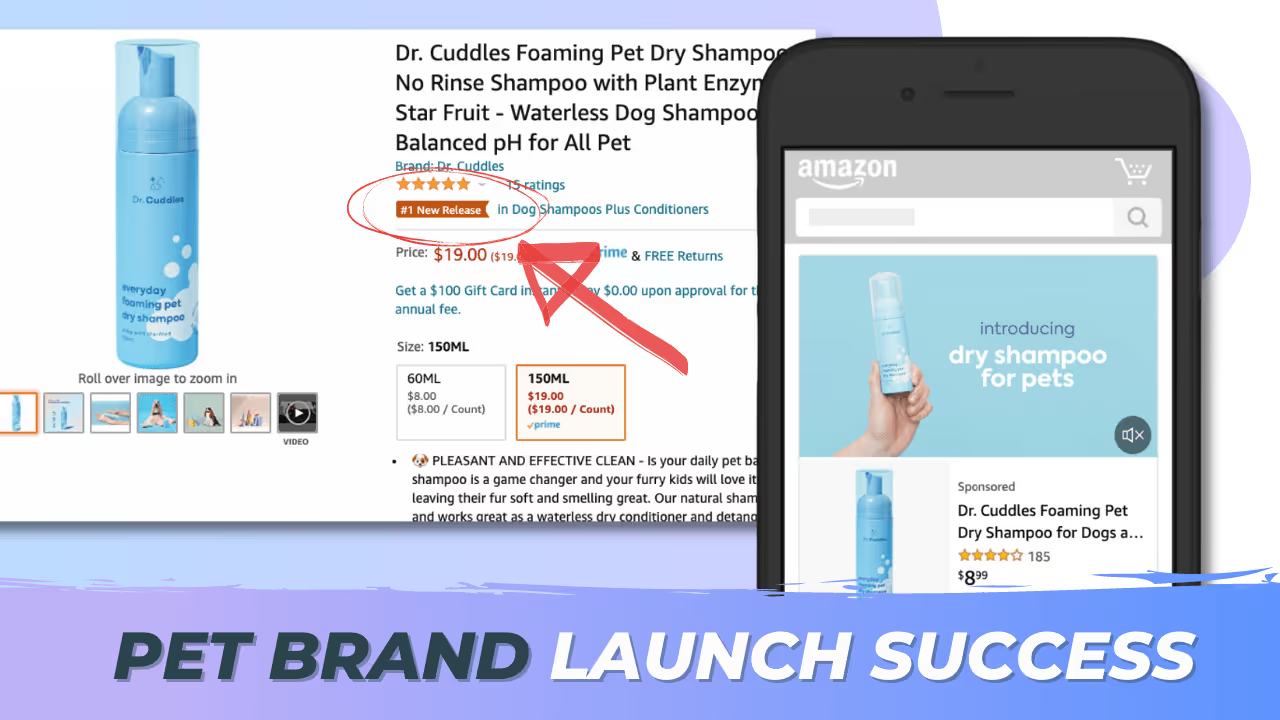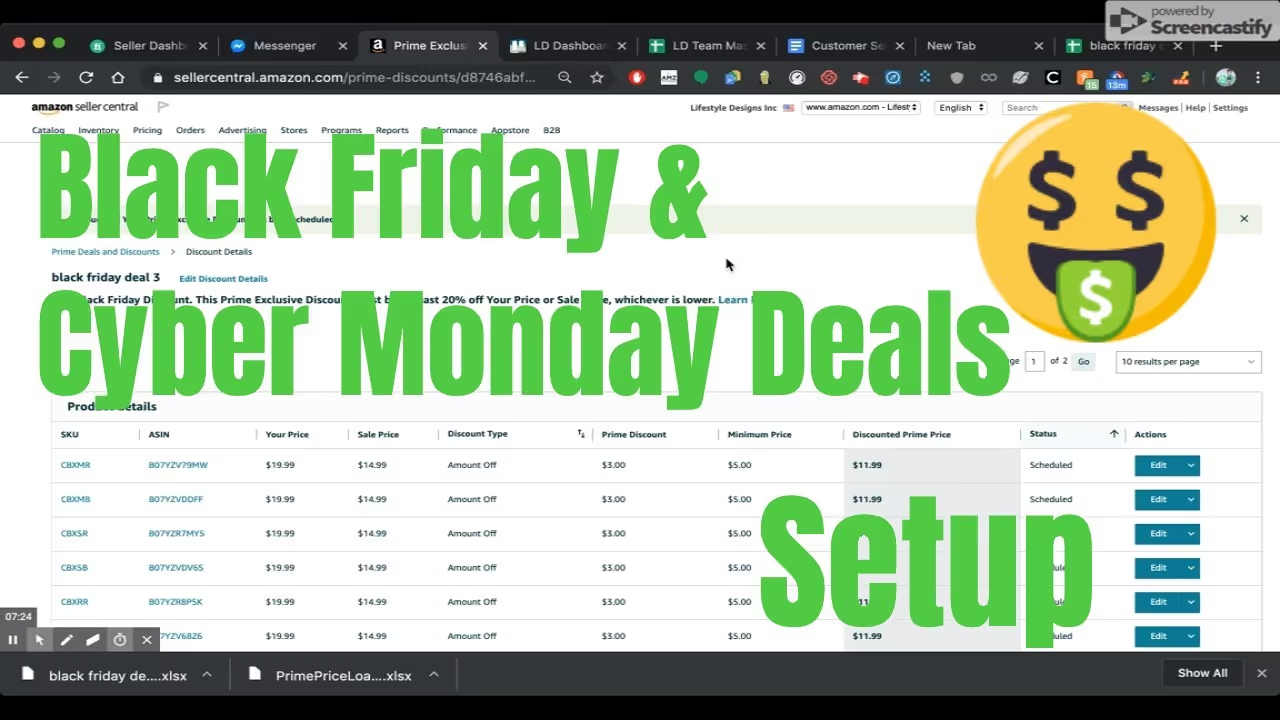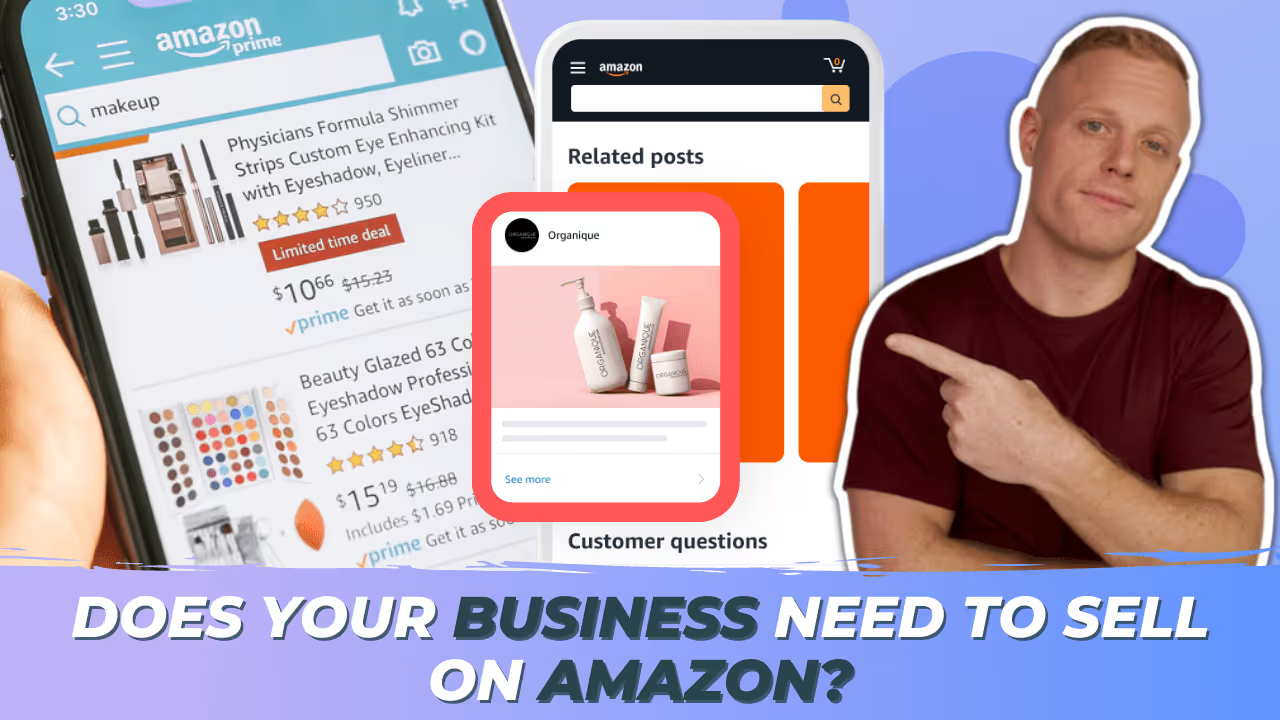4 Steps to Finding a Quality Supplier (Ep #17)

Amazon Sourcing Masterclass by Rico Ngoma

Rico Ngoma of Source Find Asia, his company is a game-changer. In this presentation, he’s going to go over the 4 steps to find a Chinese Supplier. Everything you should know when sourcing a private label product for Amazon FBA.
I recommend Source Find Asia to anyone, I’ve used them over the years. They can take care of the sourcing side for A to Z, from finding samples to negotiating with suppliers and more.
Rico is based in the Philippines, his business partner started the company over 12 years ago. Rico joined about 5 years ago, he lived in China until a few months ago. He left there pre-COVID, literally a few weeks before the breakout. Rico also runs a YouTube channel called Source Find Asia, and a podcast called The Made in China Podcast.
Over the last 5 years, they have exported products all over the world, roughly $20 million in mass production. They’ve worked with small entrepreneurs, startups, and large corporations like Cirque Du Soleil. Their experience runs through the full gamut, whether its OEM or ODM products.
Let’s get started!
The SAFE Method – 4 Steps to Finding a Quality Supplier
The SAFE method includes 4 simple steps taking you from searching for suppliers down to how to roughly manage mass productions.
S = Search

There are a few different ways you can go about searching. If you’re based in, have a team, or hire a company in China, you want them to be able to go offline. That refers to physically going to factories and markets to find suppliers that are hard to find. Usually, if a factory is not listed online they’re a little bit less expensive.
The main way that people tend to look for Chinese suppliers is online. There are a couple of different websites, like Alibaba, Global Sources, and 1688. The differences between the 3:
- Alibaba is the most famous, they allow a lot of factories to be on there and that’s a big part of the reason they are popular but a lot of the time.
However, a lot of times the suppliers that are listed in Alibaba are trading companies.
- Global Sources is a little more niche. They take a lot of time to assess suppliers, they don’t allow any factory or trading company to be listed. You’re more likely to find higher quality suppliers on here, just not as many options.
- 1688 is one that a lot of people don’t know about. It’s essentially the Chinese version of Alibaba, all of the factories listed tend to not have English speaking sales staff, or have much experience exporting abroad.
However, you can take advantage of that, because most competitors aren’t going to be able to find those factories. And those factories are going to be less expensive (than both Alibaba and Global Sources). The negative side is that you have to walk them through the import-export process.
Rico does not recommend using 1688 if you’re a first-time seller unless you have additional help or can speak in Mandarin.
The difference between a real factory and a trading factory
There’s a couple of different ways you can go about distinguishing between the two when you go to their websites on Alibaba:

- Years of experience
- Website layout – if they show pictures of the factory and certifications that’s always a good sign.
- Range of products – if they have a very diverse range then that’s a major red flag, that’s a trading company. Because every single product, no matter its complexity, has to have a ton of machinery to create.
- Communication
A = Assess
When it comes to assessing suppliers, through their sites, Rico’s team creates a shortlist or the ‘initial factory list.’ It’s essentially the basic information they take off of any of the sites. This includes the name, factory, location, and other details.
A proceeding which, Rico and his team start communicating with them. They send out an initial email or other channels, to gather basic information to eliminate them. They start making bullet-pointed questions, because a lot of the time it’s addressing someone who has English as their second or third, rarely their first language. So they sent out a brief introduction to the company followed by your list of questions.

A Lot of the time when the listed companies are asked point-blank if they’re a trading company or a factory they tend to answer honestly.
According to Rico, you start to get responses from legitimate sponsors within one or two days. It should never take more than 3 days for them to reply, that’s always a bad sign especially with that initial email.
Personally, Rico looks at factories at an OEM perspective if he’s assessing a factory:
- Flexibility for them to produce an original product in the future
- Capability to build up the orders to a certain capacity
- Would they be interested in certain agreements?
This approach would depend on your plans for the business, whether you want to build out multiple product lines or plans on expansion.
Ordering Samples
If you can’t physically be in China you’d want to be looking at samples from different suppliers. Rico usually recommends that you order around 3-5 samples if you can go up to 10, but 5 samples is a good sweet spot. That should give you a good way to assess the quality of the suppliers. This is obviously after you’ve had conversations on pricing, and other relevant questions.
When ordering samples, Rico also recommends consolidating your sample, this will help save money on express shipments. This could either be done through your partner company or a freight forwarder.
The last set of assessing a factory is pretty important, after you select a factory, physically go and visit them. Because you never know what you’re dealing with until you show up. And if you like 3 out of those 5 samples, Rico recommends going to all three factories.
F = Finalized

Now that you’ve gone through that whole assessment period you should probably have 3 options and 2 that you want to focus on (primary and backup). You’ve seen the factories (ideally) and now you want to set up, sign and stamp your contracts.
Typically with suppliers, OEM non-disclosure agreements are not necessary unless you’re going to change some aspects to the product. But you want to have at least a basic Sales Agreement set up.
Also keep in mind that these agreements should be translated to Mandarin, because factories are allowed to wave off sues by saying “the contracts were in English, we didn’t understand.”
A Sales Agreement is essentially a document that states, “I’m buying this product for X amount of money. It’s going to take this long for the production to be completed.” The most important part and longest to negotiate with the suppliers is quality control – ‘what happens if this happens?’
If you inspect your goods, and the defect rate is higher than it should be what are we doing? Are we replacing the goods? Are we getting a discount from the factory? That’s a very important question to answer.
Quality control
A general idea of how these inspections work. There’s a standard called the AQL levels, and there are AQL levels One, Two, and Three. The most common one is AQL level Two. This is a global standard, it works for different types of factories. The difference being the strictness of each level, starting the least – Level one, to the most – level three.

It’s essentially saying, there’s a critical major and minor defects on an AQL level 2 inspection. Critical defects would be 0%, Major defects would be 2-3% and Minor defects would be 3-4% allowed.
When you’re doing a physical inspection of products you’re not going to inspect the entire production unless the production is small and you’re willing to pay for multiple days of the inspection. With an AQL level two inspection, let’s say your production order is 5000 units, they’re going to take out 200-300 units for the inspection.
It’s your responsibility to decide what a critical, major, and minor defect is. The general guidelines are:
- The critical defect makes the product unsellable. – That’s why it’s 0% allowed.
- Major defects are defects that would be noticeable to the end consumer. It doesn’t make the product unsellable, just devalues it.
- Minor defects are typical defects that only the buyer or the person who made the product would notice.
E = Elevate
The reason why Rico calls this section as elevate is that the majority of the people think it’s over once they’ve signed the contract and sent the initial deposit. However that’s not the case, the work is just getting started, especially if it’s your first time with a factory.
Some things that could happen, if you’re not paying attention is that you start the production and in the end, you’re coming out with 60% defective rates on your goods. Now you’ve got to deal with trying to get the factory to replace all of that. Another issue that could happen, is that your production is pushed back by the factory.
So you don’t want to just sit back, you want to elevate your relationship with the supplier. The way you do that is by:

- Communicating through the right channels (stay on an instant reply platform like WeChat or QQ)
- Develop a relationship with your salesperson – you might want to ask about their personal life, share stories about yourself, etc.
- Understand how your factory operates – who are you talking to? When you ask for something to be done and you wonder why it’s not possible, it’s probably because you’re talking to the wrong person. (Is that the right person to be asking the question to?)
- Know the workflow of the factory – the chain of command, how they do their production.
- You want to help the factory find problems – do beta or during production inspection on your first order. Always send an end of the production inspection as well.
Rico has an in-depth version of this method you can check that out here – 4 Steps to Help You Source QUALITY Factories Like a Pro
Alright, guys, that’s all for now!
Connect with Rico
Website – Source Find Asia
NEWBIES START HERE
Want to create cashflow on Amazon but have no idea what to sell or where to start?
1) SUBSCRIBE to this channel for weekly tips, tricks & strategies.
2) DOWNLOAD my FREE “Amazon FBA Secrets” E-book (100+ pages) – http://livinthatlife.com/fba-ebook
3) BEGIN your product research! Use the Worksheet in my E-book along with JungleScout: http://livinthatlife.com/junglescout
4) APPLY to join the next 90-Day FBA Challenge/Accelerator if you want to go FAST & get coached by me: http://livinthatlife.com/90dayfba
5) FOLLOW on Instagram Podcast platforms: • Instagram: https://www.instagram.com/fba_lifestyle
• Apple Podcasts: https://podcasts.apple.com/us/podcast…
• Spotify: https://open.spotify.com/show/2JZCx75…
Need advice? Shoot me a message on Facebook – https://m.me/livinthatlifetv
Related Blog


Case Study: Pet Brand Launch to $35,000/mo in 3 months on Amazon


How to Set Up Cyber Monday; Black Friday Discounts on Amazon Seller Central.


Done-for-you Product Research & Sourcing



